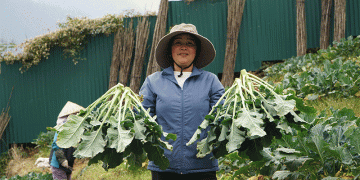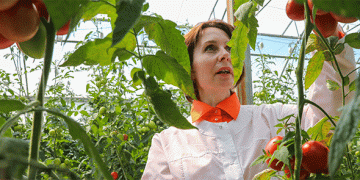Cover crops can disrupt pest life cycles and reduce their populations. Brassicas are also used as a biofumigant to manage some soilborne pests. Certain crop species can also be used as trap crops and to encourage beneficial organisms.
Cover crops contribute to integrated pest management (IPM) through a variety of mechanisms.
When certain cover crop material is chopped up and incorporated into the ground, it releases toxic compounds that help sterilise the soil.
For example, brassica cover crops release glucosinolates – and products of their degradation, such as isothiocyanates – as well as volatile sulphur compounds that are toxic to many soilborne pests.
Biofumigant cover crops have been demonstrated to be useful for managing beet cyst nematodes and rhizoctonia root rot in sugar beet and potato cyst nematodes in potatoes.
How cover crops are produced, destroyed and incorporated will affect the efficacy of biofumigation.
Some cover crops can act as a trap crop by promoting pest egg hatch, including some nematode species.
Cabbage root fly and other brassica pests can be disrupted by diverse planting, for example, with intercropped cover crops (understory or strips). However, the approach requires experimentation in each system.
Cover crops provide habitats for general predators, which is especially important over the winter.
Summer-flowering plants also encourage beneficial predators such as hoverflies, lacewings and parasitic wasps.
Cover crops can encourage some pest species, but they can also help control pests in grass leys.
However, long grass-clover leys can harbour soilborne pests, such as leatherjackets and frit flies, which can reduce dry matter production significantly and even destroy a grass ley reseed.
Good management can reduce the impact of soil pests:
- Autumn ploughing and disking can reduce wireworm numbers
- Close mowing between July and September reduces egg-laying by crane flies (the adults of leatherjackets)
- A quick mustard crop (high-glucosinolate variety) can be effective at reducing soilborne pests through biofumigation, providing it achieves a large biomass with rapid incorporation into sufficiently damp soil
Some cover crop scenarios can increase slug populations. However, ryegrass or lucerne are unlikely to cause problems.
Some cover crop species host soilborne pests, providing a ‘green bridge’ between main crops.
Ploughing in leafy crop residues may also support egg laying by bean seed flies.
Reference: https://ahdb.org.uk/knowledge-library/































